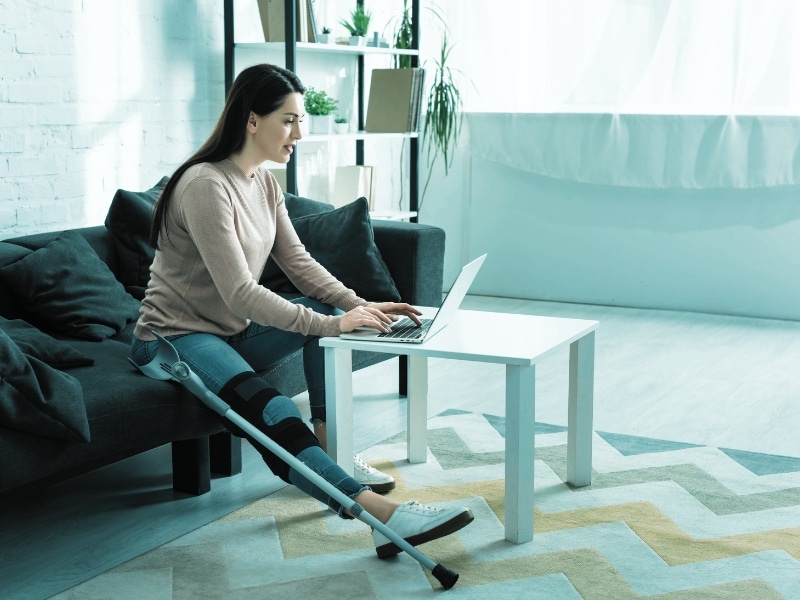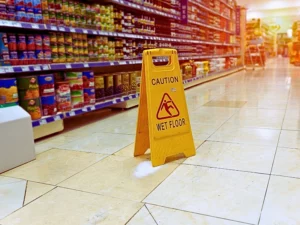Looking at examples of product liability cases may help you understand if your injury was caused by a defective product, and if you’re entitled to compensation. Every day you use products that have been designed, manufactured, and sold by a company. In doing so, you are putting your trust in that company.
Unfortunately, products are sometimes defective. Defective products ranging from coffee to balancing balls and anything in between cause injury and death every year. Examples of product liability cases have been cases involving hot coffee, asbestos in building materials, gas cans, rifles, cars, breast implants, balancing balls, cigarettes, weed killer, and an acne drug.
If you have received harm from a defective product, this may be grounds for a product liability case. Product liability cases can be instituted where the design is defective, where there is a failure to warn by not having adequate instructions or safety warnings, malfunctions, and hidden defects.
What Is a Product Liability Lawsuit?
A product liability lawsuit involves products that harm their users and is aimed at holding the manufacturers and sellers of the products accountable for the defective product. It is where a claim is brought seeking compensation for an injury or harm suffered by using a defective product.
On the face of it, you will have a product liability lawsuit if your case meets the following requirements:
- The defendant either manufactured the whole product or part of the product or assembled the product. Alternatively, the defendant distributed or sold the product, either as a wholesaler or retailer.
- You as the plaintiff used the product as it was intended to be used.
- You as the plaintiff suffered an injury or some form of harm.
- When you bought the item, it was defective.
- The defect in the product was both the actual cause, and the proximate cause of the harm.
Potential Liable Parties
There are several parties involved in the supply chain, each one with a duty to ensure that the product is safe for use and not defective when it ends up being used by the buyer.
Parties that commonly have liability include the manufacturer of the whole product, the manufacturer of components used as part of the product, a party who installs or puts the product together, the wholesaler of the product, and the retailer of the product who sells it to the consumer.
If you have suffered harm from a defective product, you will want to hire a product liability lawyer who can advise you of your rights and options.
Since there are no federal product liability laws, claims are based on strict liability, negligence, or breach of warranty. Your product liability attorney can advise you on which of these is best to bring your claim.
Negligence
The laws pertaining to negligence require a standard of conduct from a person to ensure that his or her actions do not lead to harm to other individuals. If a person conducts him or herself in such a way as to lead to harm to another individual, the law requires this person to compensate anyone who was injured as a result of this conduct.
To prove negligence, a plaintiff must prove five elements. First, the defendant owed a duty of care to the plaintiff. Second, the defendant breached this duty. Third, the defendant’s conduct was the actual cause of the harm that the plaintiff suffered. Fourth, the defendant’s conduct was the proximate cause of the harm, meaning that the harm was foreseeable because of the defendant’s conduct. Finally, the plaintiff suffered damages because of the defendant’s conduct.
In product liability claims, the designer, manufacturer, distributor, and/or seller all owe a duty of care to the consumer who uses the product. Therefore, any one of these parties can be considered negligent, depending on when the defect arose. However, it may be impossible to prove how a manufacturer or designer was negligent. Because of this, the law developed the principle of strict liability, under which you can also bring your product liability claim.
Strict Liability
Strict liability in product liability claims is different from other claims for personal injury. Usually, in a personal injury claim, you will have to show that the defendant was negligent or willful in causing your injury or harm.
In product liability, however, defects can come at any stage of the supply chain. As such, they may occur during the design, manufacture, handling, or shipment of the product. It would be extremely expensive and difficult to prove that there was negligence at one of these stages in making and selling the product. Because of this, the law developed the principle of strict liability, which applies to product liability claims.
Under strict liability, you do not need to prove negligence. You will have a claim if:
- The product has a defect that caused harm or injury to the user of the product. This defect could have arisen at any stage of the supply chain, such as design, manufacture, handling, and shipment or selling of the product.
- The defect must have caused harm while the product was being used as intended.
- The product must have not been altered or substantially changed from the time that it was sold.
Breach of Warranty
A warranty is a guarantee given by a seller for a product that it will meet a particular standard of quality. A breach of warranty claim arises out of contract law when the product fails to meet the standards assured of in the warranty. The consumer may hold the seller accountable under these circumstances. The consumer will be entitled to have the product fixed, receive a replacement, or claim monetary damages if the defect caused harm or injury.
Warranties may be expressed or implied. Express warranties are given in the form of a statement, either written or verbal, guaranteeing a certain level of quality or reliability. Implied warranties are guarantees that are not given as statements, but are automatically presumed. Almost all consumer products come with an implied warranty that they are guaranteed to work for their given purpose and are free from defects. This is called a warranty of merchantability. An implied warranty is the realistic expectation that a consumer has regarding a product when it is purchased.
Types of Product Defects
Since a product liability lawsuit requires the product to have a defect, it is important to understand what a defect is. A defect is an imperfection that impairs the quality or functioning of a product. For the purposes of a legal claim, the defect can be one of three types:
Design Defect
A design defect is a flaw in the design of the product, which makes it dangerous even if the product was manufactured correctly.
Manufacturing Defect
This is a type of defect that is not intended. In this case, something has gone wrong while the product was being made, which departs from the intended design and makes it dangerous while being used for its intended purpose. It will appear in some products only and not the entire product line.
Marketing Defect
Marketing defects are improper instructions or inadequate warnings about a product’s proper use. Even if the product was manufactured correctly, this failure to instruct or warn properly can make a product dangerous and creates a defect in terms of the law.
Examples of Product Liability Cases
In a practical sense, examples of the above types of manufacturing defects will be given. A design defect can include products that are inherently dangerous, such as a pressure cooker that can be opened before it is depressurized. Doing this led to a person being sprayed with scalding contents and receiving burns. It can also be dangerous machinery, including lawnmowers and industrial equipment missing safeguards, such as automatic shut-offs.
Manufacturing and hidden defects can come in the form of medical devices, such as defective knee replacements where the joint loosens. These defects have also included food that is dirty or contaminated, resulting in sickness. Additionally, they include defective car seats where there are defective components such as buckles or chest clips that can unfasten during an accident, resulting in injuries to a child.
An example of a marketing defect was when a pharmaceutical company failed to warn of possible gastrointestinal side effects of one of its drugs used for acne.
Damages
If you have been injured by a defective product, you may have a Nevada product liability claim. You can claim damages for harm suffered as a result of a defective product. Damages are a monetary award paid out to compensate you for harm or injuries that you suffer because of a defective product.
Using past examples of product liability cases, you may be able to recover damages for medical bills, lost wages, property damage, prescription medications, pain, and suffering, scarring and disfigurement or punitive damages. A defective product lawyer will be able to help you sue a company for a defective product and will be able to advise you as to what damages you may be able to claim.





